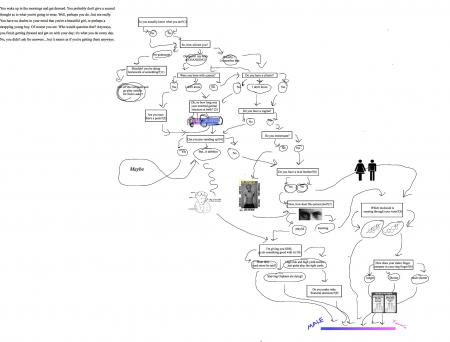Serendip is an independent site partnering with faculty at multiple colleges and universities around the world. Happy exploring!
Kammy's blog
The link between Intersexuality, Transgenderism, and Surrogacy
I've found this week's readings to be both interesting and salient, especially in comparison to Elly Teman's Birthing a Mother (which I have been reading for another class). Teman's book is an ethnographic exploration of surrogacy in Israel. It examines the process of surrogacy as perceived by both the surrogate and the intended mother, and it addresses the construction of motherhood within the particular context of Judaism and nationalism of Israel.
Week 2: Clare and Stigma
For another one of my classes, we have been reading Erving Goffman's Stigma, and thus it was through the lens of a constructed personal/social identity, as well as the management of that identity, that I read Exile and Pride. Through personal anecdote as well as historical contextualization, Clare explores what the terms "freak", "queer", "supercrip", "retard", "dyke" mean - he explores what these words denotate, conotate, and how they are utilized social context. Within this exploration of identitity - both personal and social, "insider" and "outsider" constructions of it - Clare analyzes both positve and negative constructions of each lexical term and how they represent the individuals standing behind them. Through such analysis Clare expresses how some of these terms may be used to stigmatize on the one hand, or to express pride on the other. However, Clare does not idealize the elevation and adulation of the "disabled" or the "queer" for overcoming and persevering. Instead Clere idealizes the notion of difference without the assignment of value. In short, he asks for the erradication of such stigma. Confronted with this ideal, I would ask: how as a society do we come to normalize things such as disability and gender (not conforming to the male/female binary)? What would it take realistically to enact such a change in social perception?




